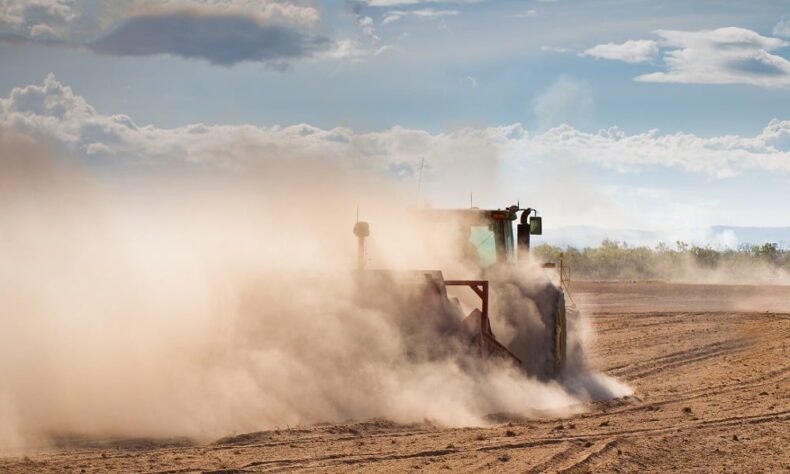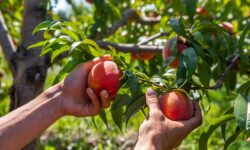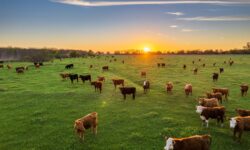Extreme weather throughout the year will cause a shortage of stone fruit in BC: We…
Earlier this year a report titled Canada’s Changing Climate was released and quickly shared across the country for its alarming statement which read: “Northern Canada has warmed and will continue to warm at more than double the global rate” (1). This week, news outlets informed us that our earth is on track to warm by 3.2 degrees celsius by 2100 unless drastic action is taken (2). As scientists tell us, this overall temperature rise does not just mean warmer weather (3). Climate change causes a variety of environmental problems, such as prolonged drought or excessive flooding, by disrupting weather patterns (4).
While climate change reports like these may make you feel like a passenger on a journey to a dystopian destination you don’t want to reach, there are many ways you can take control. One such opportunity has come up just recently! The Province of BC has released a questionnaire asking British Columbians to share how climate change is impacting them as well as to ask for recommendations to prepare for a changing climate. Sorry Alberta, no same survey has come out for your province just yet but there are still many ways you can work towards a sustainable future!
To align with this hot topic, this week we are exploring what climate change means for our food system and what ways you can be part of the solution.
What is happening and what will happen
The impact of climate change on agriculture in Canada, which makes up just 10% of the country’s landscape, will have both positive and negative consequences (5). In high latitudes, increased temperatures are predicted to benefit crops as yields are usually limited by shorter growing seasons and colder temperatures than in lower altitudes (6). In addition, the increase of carbon in the atmosphere will benefit some plants as carbon is a key component to healthy soil (7). This positive impact however, is hindered by various negative impacts.
Since agricultural management is closely tied to weather patterns, alterations of these patterns by climate change pose many challenges to farmers. For example, the “timing of precipitation is a key factor in productivity” (8). If precipitation comes too soon, too heavy, or too little, full fields of crops can be ruined. For example, precipitation that comes later in the year can surprise farmers who have not prepared crops to be protected by frost. These weather abnormalities can expose farmers to increased financial risks and impact food security.
Lastly, climate change will likely make food more expensive and potentially scarcer. For Canada’s food insecure population, increases in food price and accessibility is a grave concern.
How are farmers responding, how they could adapt, and what’s missing
Much of adaptation planning lacks to integrate a social variable when predicting how society will respond to climate change. One research study found when interviewing various Canadian farmers that although the majority of farmers know climate change is occurring and have personally felt the impacts, very few have adopted any adaptive measures (9). Adaptive measures would be doing things such as transitioning to crops that are more resistant to changing climates (10). One of the main reasons why farmers had not taken any adaptive measure was that they felt there were more immediate concerns to address (11). In short, adaptation planning must account for the heavy workload that farmers already manage and consider how they can be supported to enable them to invest in climate resiliency and adaptive solutions.
Further, adaptation “solutions”, such as having farmers switch the crops they grow to more resilient crops, fails to acknowledge that food is more than just fuel to the body. People want food that tastes good, fits their dietary preferences, as well as reflects their cultural values. In other words, switching to more resilient crops may be possible from an environmental perspective, but from a human-centered perspective, this solution may be less possible than assumed.
How can you help
Everything we do has an impact on our planet. With that in mind, consider everything you do as a vote for the kind of world you want to live in. Buy from brands that support social and environmental sustainability, teach young ones in your life about why the environment matters, and mobilize your right to citizenship by telling local leadership what you want your community to look like. What other ways can you get involved in supporting your community?
Sources
- 1. Environment and Climate Change Canada. “Canada’s climate is warming twice as fast as global average.” Government of Canada. April 2, 2019. https://www.canada.ca/en/environment-climate-change/news/2019/04/canadas-climate-is-warming-twice-as-fast-as-global-average.html
- 2. Mortillaro, Nicole. “Earth set to warm 3.2 C by 2100 unless efforts to cut emissions are tripled, new UN report finds.” CBC News. November 26, 2019. https://www.cbc.ca/news/technology/un-emissions-report-1.5373154
- 3. Wheeler, Tim, and Joachim Von Braun. “Climate change impacts on global food security.” Science 341.6145 (2013): 508-513.
- 4. Ibid.
- 5. Weber, Marian, and Grant Hauer. “A regional analysis of climate change impacts on Canadian agriculture.” Canadian Public Policy-Analyse De Politiques 29.2 (2003): 163-180.
- 6. Rosenzweig, Cynthia, and Martin L. Parry. “Potential impact of climate change on world food supply.” Nature 367.6459 (1994): 133.
- 7. Kumar, Rajeew, Sharad Pandey, and Apurv Pandey. “Plant roots and carbon sequestration.” Current Science (00113891) 91.7 (2006).
- 8. Weber, Marian, and Grant Hauer. “A regional analysis of climate change impacts on Canadian agriculture.” Canadian Public Policy-Analyse De Politiques 29.2 (2003): 163-180.
- 9. Brown, Molly E., and Christopher C. Funk. “Food security under climate change.” Science 319.5863 (2008): 580-581
- 10. Ibid.
- 11. Ibid.




